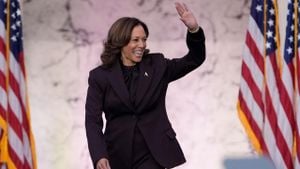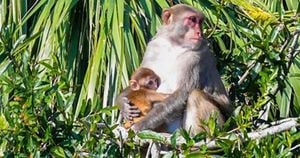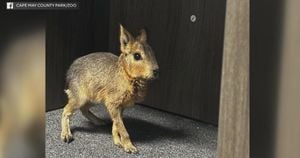Navigational themes of space exploration are taking some dramatic turns as NASA faces unexpected hurdles with the Boeing Starliner spacecraft, which was initially set to transport astronauts Sunita Williams and Butch Wilmore back to Earth after their mission aboard the International Space Station (ISS). Originally planned to be just one week long, their stay has been extended significantly due to systematic technical issues, pushing their return to February 2025.
The timeline for this mission has shifted quite dramatically. Both Williams and Wilmore arrived at the ISS aboard the Starliner on June 5. That mission was part of Boeing's Crew Flight Test (CFT), which was intended to demonstrate the spacecraft's capabilities to routinely transport astronauts to and from the space station as part of NASA's Commercial Crew Program. Unfortunately, unforeseen technical complications, including helium leaks and malfunctioning thrusters, prompted NASA to reconsider the safety of their return via the Starliner. By late August, the agency officially deemed the spacecraft’s return unfeasible.
NASA's decision to postpone their return has inherent safety ramifications. The organization is now partnering with SpaceX to facilitate their eventual return sometime next year. "Safety is our top priority, and we would rather wait for the right opportunity than risk anything with our astronauts," said NASA officials as they announced the plans for Williams and Wilmore’s extended stay.
NASA and Boeing had originally hoped to prepare Starliner for safe undocking and re-entry operations, but it became clear following the Delta-Flight Test Readiness Review on August 24, 2024, during which teams identified serious reliability concerns, including the aforementioned helium leaks, which require thorough addressing before the spacecraft is cleared for subsequent missions.
After the data analysis and consultations with Boeing, they decided to prioritize safety and delay the astronauts’ scheduled return. This decision marks yet another complication for Boeing, whose reputation has taken hits after previous delays and issues with the Starliner program. They are working on proving the spacecraft's reliability with strict compliance standards through planned uncrewed missions.
Currently, both astronauts remain on board the ISS, contributing to much-needed scientific research. NASA has assured the public and their families of the safety of the astronauts, emphasizing their well-being and the significance of their work within the confines of the space laboratory. Williams and Wilmore said they continue to stay actively involved with various experiments and maintenance tasks onboard the ISS, and they are maintaining good health during this extended period.
The new plan for the uncrewed return of Starliner is slated for September 7, 2024, where it will leave the ISS empty. The spacecraft will perform autonomous maneuvers to bring it safely back to Earth, where it is set to land at White Sands Space Harbor, New Mexico, at approximately 12:03 AM IST. This mission will be closely monitored, as it’s key for building confidence for when Williams and Wilmore finally return to Earth. While aboard, they must manage the physical and psychological stress of extended spaceflight, which includes facing potential risks like muscle atrophy and radiation exposure.
Technical issues like those faced by Boeing have raised questions about the overall reliability and readiness of American spacecraft. For example, NASA has taken pains to outline how they will manage future risks by implementing extra oversight and developing contingency plans to avoid scenarios like the current one with Williams and Wilmore.
Despite these hurdles, there's optimism. NASA has committed to ensuring all safety protocols are adhered to and promises of improvements are on the horizon. The agency recognizes the limitations of their current equipment as well as the need for continual assessments of the systems involved. Both astronauts expressed confidence about their eventual return but acknowledged the challenges present.
For now, Sunita Williams and Butch Wilmore are holding the fort onboard, contributing invaluable knowledge to humankind's quest for knowledge of space. Whatever the outcome, their resilience shines through as they seek to tackle enormous challenges and anticipate the next steps for their long-awaited return to Earth.
The collaboration of both NASA and Boeing will depend on upcoming tests which could determine if the Starliner is ready for more missions. Analysts see Boeing’s work as pivotal not just for their own future missions, but for the entire commercial astronaut industry. The success of these projects may dictate how private enterprises share the responsibility of human spaceflight and safety moving forward.
Attaining safety requires not only technical expertise but also fostering public trust. With heightened scrutiny on the program, post-incident analyses will play an important role as both Boeing and NASA grapple with reliability concerns. The odds may seem stacked against them, but with perseverance and innovation at their helm, renewed commitment to the program could yet yield positive results.
So as Williams and Wilmore prepare for their extended stay, they continue to inspire those around them. It has become more than just about reaching their destination; it’s about shaping the future of space travel and ensuring safety for all astronauts who venture forth. Amid uncertainties surrounding the Starliner, the focus remains on patience, preparation, and proactive safety measures. Whether through successful returns or troubled flights, the astronauts’ contributions to science and future aspirations of space travel cannot go unnoticed.



